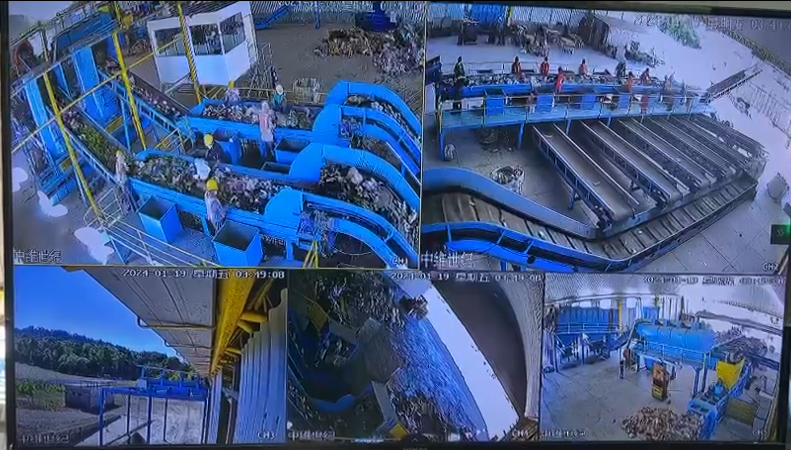

Noy . 10, 2024 22:01 Back to list
Aluminium Shredding An Essential Process for Recycling and Sustainability
Aluminium is one of the most versatile and widely used metals in the world, playing a crucial role in various industries, from automotive to aerospace, packaging, and construction. Its unique properties—such as lightweight, corrosion resistance, and excellent conductivity—make it an ideal choice for numerous applications. However, with increasing industrial activity and consumer demand, the efficient recycling of aluminium has become more important than ever. One of the key techniques in aluminium recycling is shredding, which significantly enhances the value and sustainability of this invaluable metal.
The Shredding Process
Aluminium shredding involves breaking down large pieces of scrap aluminium into smaller, manageable fragments. This process typically begins with the collection of aluminium waste, which can come from various sources, including industrial scrap, consumer products, and production leftovers. Once collected, the aluminium scrap is transported to recycling facilities where it undergoes shredding.
Shredders are heavy-duty machines equipped with sharp blades that can efficiently chop metal into small pieces. The shredding process not only reduces the size of the aluminium scrap but also increases its surface area, making it easier for subsequent processes, such as washing, separation, and melting. Shredding is fundamental because it prepares the material for more efficient recycling, ultimately leading to higher quality and purer aluminium products.
Benefits of Aluminium Shredding
1. Increased Efficiency By reducing the size of aluminium scrap, shredding minimizes the time and energy required for subsequent recycling processes. Smaller fragments allow for more uniform melting and quicker processing, leading to a more efficient recycling operation overall.
2. Enhanced Quality Shredded aluminium has a higher surface area, which facilitates better cleaning and separation from contaminants. This is crucial in producing high-quality recycled aluminium that meets industry standards. Clean, high-purity aluminium can be reused in new products, reducing the need for primary aluminium production.

3. Environmental Sustainability Aluminium recycling through shredding significantly lessens the environmental impact of aluminium production. The extraction and processing of bauxite—the primary source of aluminium—are energy-intensive and environmentally damaging. By recycling aluminium, we can conserve energy, reduce greenhouse gas emissions, and lessen the depletion of natural resources.
4. Economic Benefits The recycling of shredded aluminium has considerable economic advantages. It creates a circular economy where materials are reused and recycled, reducing waste and lowering production costs. Recycled aluminium requires only 5% of the energy needed to produce new aluminium from ore, resulting in substantial savings for manufacturers and consumers alike.
5. Job Creation The aluminium recycling industry, powered by processes like shredding, contributes significantly to job creation. From collection and transport to processing and selling, numerous employment opportunities emerge as the demand for recycled materials increases.
Challenges and Innovations
While aluminium shredding presents numerous benefits, it is not without its challenges. The efficiency of the shredding process can be affected by contaminants, such as plastics, rubber, and other metals. Thus, developing advanced sorting technologies and improving contamination removal processes is vital for enhancing recycling outcomes.
Moreover, innovations in shredding technology continue to evolve. Modern shredders are becoming more efficient and environmentally friendly, equipped with electronic controls and energy-efficient motors. Additionally, integrating automation and artificial intelligence into the shredding process can optimize operations and improve the efficiency of aluminium recycling.
Conclusion
Aluminium shredding is an essential process in the recycling of one of the most widely used metals in the world. It improves the efficiency and quality of the recycling process, contributes to environmental sustainability, and offers significant economic benefits. As the demand for aluminium continues to rise, the importance of effective shredding practices and innovations in the recycling sector will only grow. By embracing these advancements, we can work towards a more sustainable future while maximizing the value of aluminium.
Latest news
Troubleshooting Common Eddy Separator Problems
NewsJul.04,2025
The Role of Metal Recycling Plants in Circular Economy
NewsJul.04,2025
The Impact of Recycling Line Pickers on Waste Management Costs
NewsJul.04,2025
Safety Features Every Metal Shredder Should Have
NewsJul.04,2025
How Industrial Shredders Improve Waste Management Systems
NewsJul.04,2025
How Cable Granulators Contribute to Sustainable Recycling
NewsJul.04,2025